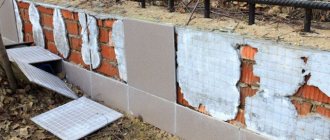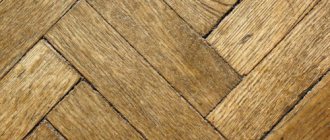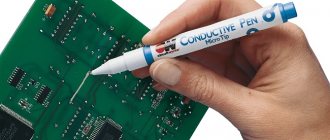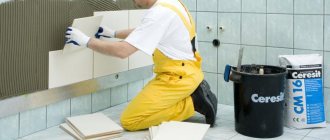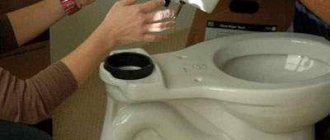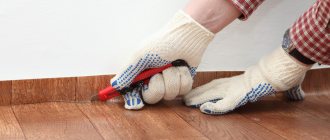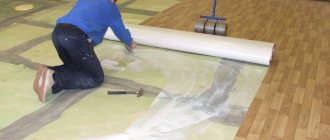Even with the modern variety of materials, linoleum remains one of the most unpretentious and affordable, and therefore in demand. How to glue linoleum so that the coating lasts for a long time without losing its appearance is a difficult question, since there are also many options and methods for carrying out the work.
The method of attaching the material to the surface is also controversial. First of all, you need to decide whether you need to glue the linoleum to the floor.
Linoleum remains one of the most unpretentious and affordable materials
Existing varieties of linoleum
There are objective reasons that may affect the way the material is secured. First of all, the type of material. Depending on the scope of application, the following types are distinguished:
- domestic;
- commercial;
- semi-commercial.
Types of linoleum
Commercial and semi-commercial, as the name implies, are used mainly in offices, institutions, shops, etc. For domestic needs, it is better to use a household one. This material is distinguished by a huge variety of design options, which allows you to find an option in the desired color and with the desired pattern for any interior. Semi-commercial is a material that is average in price and characteristics.
Linoleum is distinguished not only by its affordable price, but also by many advantages for use in domestic conditions. First of all - durability. High-quality material can last at least 15 years. It does not require complex care, and small debris does not stick to it. It does not fade from sunlight and is very flexible. However, linoleum has a number of disadvantages. When moving furniture, it wrinkles, which spoils the appearance of the room, and under certain conditions it can swell, and then its operation becomes very difficult.
One of the main advantages of linoleum is durability.
For all these reasons, the question arises of whether to glue linoleum to the floor, or whether it should not be done. Even among experts, opinions on this matter vary.
Options for fixing linoleum
And yet we need to figure out the question of whether it is necessary to glue linoleum. There are only two main ways to fix the material on the floor: with or without glue. Among the advantages of the adhesive fastening method is better coating strength. During use, the coating does not swell, does not ripple after furniture is moved, and there are no dents left on its surface from the legs of a table or cabinet.
Among the advantages of the adhesive fastening method are better coating strength
The fixed material remains perfectly smooth during operation and lasts longer. The coating is durable, the seams are securely fastened.
But this method has its drawbacks. First of all, you need to choose only high-quality glue. If it does not meet the requirements, then after a while it will begin to crawl to the surface. In addition, adhesive fastening is suitable only for those who are not eager to change the interior of the apartment every year, since linoleum is glued, as they say, tightly. Removing the old coating to replace it with another will be problematic. Therefore, you should think carefully about whether you need to glue linoleum.
Among the old fastening technologies without glue - fastening with ordinary nails
Among the old fastening technologies without glue is fastening with ordinary nails. Despite the significant development of technology, the good old method is still alive and is still used along with the more modern one - fastening the sheet using skirting boards.
However, glueless technologies are gradually becoming obsolete. They are no longer popular among professionals. Why will become clear almost immediately after the start of operation. Even a slight movement of the furniture will cause the surface of the material to wrinkle; it will have to be constantly adjusted. And waves are a characteristic feature of a glueless connection. Therefore, even if the room is small, according to experts, the question of whether to glue linoleum is no longer relevant. The answer is unequivocal - “Yes”.
Important! One of the best ways is to attach it to bitumen mastic.
This method is good when there are any defects on the screed, and the question arises of how to glue the linoleum, since neither glue nor tape is suitable in this case. Mastic is a good option for gluing linoleum in spacious rooms.
Mastic is a good option for gluing linoleum in spacious rooms
It is recommended to glue the material onto a floor without a base using mastic based on synthetic resins. To work with material based on felt or fabric, especially if it needs to be glued to a wooden floor, types of mastic are used:
- Biscuits;
- DFK;
- Acrylax;
- Syntalax.
Bituminous mastic will additionally serve as waterproofing
Bituminous mastic will additionally serve as waterproofing. But before application, it is necessary to coat the floor with a layer of primer to improve adhesion.
When not to glue linoleum
Although the adhesive method of securing the material is considered the most popular, there are still several cases when it is not only undesirable, but contraindicated. Such cases are determined by the area of the room and the condition of the floor.
First of all, a good question arises about whether it is necessary to glue linoleum to the floor if the room area is less than 20 square meters. m. Then one or two pieces of linoleum are secured with double-sided tape, and secured around the perimeter with a plinth. The seam can be joined by cold welding.
Important! Gluing cannot be carried out on a loose, crumbling screed. However, modern also cannot be the basis for linoleum.
Often homeowners have a question about how to glue linoleum to a floor made of chipboard, hardboard or fiberboard. In this case, the only option is a glueless connection. Chipboards and similar materials do not withstand temperature changes, condensation and moisture accumulation. Over time, they become deformed and crumble. Therefore, the use of glue is strictly prohibited.
It is allowed to fix linoleum with glue only on a perfectly flat surface.
It is allowed to fix linoleum with glue only on a perfectly flat surface. If there are uneven surfaces, they must first be carefully leveled. For this reason, plank flooring is also not the best base for linoleum. Especially if the parquet (or board) creaks and sags.
Finally, it is not recommended to install linoleum on a painted floor, even if the paint has partially peeled off. Over time, the glue will react with the components of the paint, and then unsightly stains will appear on the floor surface.
Gluing technology
Before gluing the linoleum, you need to spread it in the room and let it lie for several days. After this you can start gluing. Laying proceeds from the far wall towards the door. The strips of spread linoleum are folded back halfway and evenly coated with glue using a notched trowel.
If necessary, glue is also applied to the base. Along the edge of the coating, a strip of about 10 cm wide is not smeared with glue, so that the sheets can be fastened together in the future. After spreading, the canvas is put back and rolled with a rubber roller. Then the same operation is carried out with the second half of the coating strip.
When the coating is glued, you need to process the joints of the strips and fasten them securely so that over time the coating at the joints does not begin to come off. You can do this in several ways:
- For commercial linoleum, the hot welding method is used, which is carried out using special equipment. When the coating strips are firmly glued to the floor, the seams are processed. A small space is cut along the joint for a cord, which is inserted into a welding tool, heated to 400 degrees, placed in a groove and melted, connecting the strips of fabric. After passing through the entire joint, the excess that has not yet cooled down is removed using a knife. Welding cords of different colors can become a separate interior detail.
- It is better to fasten soft household linoleum with cold welding, which is a tube with a special adhesive. This procedure can be easily done on your own as no special equipment is required. There are three types of glue for this type of welding: A, C and T. The first is used for processing freshly laid new linoleum, the second is used for gluing an old thick seam on a long-used coating, and the third is used only for professional installation. It is important to note that before working with glue A, the joints of the canvases are connected with tape, which is then cut, and glue is poured into the cut. When the glue dries, the tape can be removed along with excess adhesive.
Related article: How to putty drywall corners: emphasis on nuances
Thus, gluing linoleum to the floor is a simple process that does not require special skills and knowledge. With the right choice of glue, problems both during work and during further operation are unlikely.
Choosing glue for linoleum
Important! The choice of glue is an important step, since it will determine how well the material is fixed to the surface and whether defects will appear.
How to glue linoleum depends on the base on which the material will be applied. For each of them you should choose your own type of glue.
There are two main types of glue: dispersion and reaction. Dispersion adhesive is made on a water basis. It is best suited for home use, including self-gluing.
Dispersion glue
The dispersion adhesive consists of three components:
- cellulose glycolic acid;
- acrylic;
- water suspension.
Dispersion glue is safe and environmentally friendly, non-toxic. It is quite elastic, therefore it is used for gluing a continuous panel of linoleum. For a good result when using dispersion adhesive, it is necessary that the surface of the screed or linoleum absorbs water. Therefore, if the question of how to glue linoleum to a concrete floor is being decided, then dispersion will be a good option.
Its disadvantage is that it does not tolerate low temperatures well. Therefore, if delivery was carried out at the wrong temperature, the glue may no longer be suitable for use. Another important drawback is low moisture resistance.
Acrylic glue
Important! If the floor in the apartment is wooden, then you need to choose the glue especially carefully.
How to glue linoleum to a wooden floor - this issue can be solved in a hardware store. Most often in such cases it is advised to purchase acrylic glue with a plasticizer. It is quite reliable, but at the same time elastic and durable. Acrylic glue qualitatively bonds linoleum to the floor surface, does not crumble over time, does not dry out, and retains its elasticity for a long time.
Acrylic adhesive qualitatively bonds linoleum to the floor surface
Reaction adhesive is also called "cold weld" adhesive. It is well suited for joining linoleum panels, allowing you to make the joint almost invisible.
Reaction adhesive contains two elements that react. This type of glue is more durable, it is suitable for use in more difficult conditions, and is not afraid of moisture and temperature changes. But at the same time, the reaction glue has a pungent odor and is quite toxic, flammable, and explosive. Therefore, the big question is whether it is possible to glue linoleum at home. Ideally, cold welding is only suitable for commercial material or fairly hard household material.
Basic methods of working with linoleum
Liquid Nails
A great achievement in the building materials market was the appearance of such glue as liquid nails. This product has made the job of many DIYers, not just professional builders, much easier.
Liquid nails are excellent for linoleum, securing it perfectly. Moreover, they can even be used for fastening glass, drywall, and tiles.
The composition should be applied to the surface to be glued, not in a continuous mass, but in droplets or in a snake. Typically, such a composition dries in a day or 12 hours. The drying speed will depend on the temperature of the room, its humidity, and the thickness of the layer.
Liquid linoleum
This is a very practical innovation in the field of construction work, which is also referred to as self-leveling floors. That is, the self-leveling floor is stylized to look like linoleum. This material creates a coating on the surface that in appearance resembles simple linoleum.
Its advantage is that it creates an almost perfectly flat surface with no defects or seams. And with all these advantages, such material has a wide choice among the color palette.
Try to find a seam
The thickness of the self-leveling floor can vary from one to seven millimeters. As a household option, liquid linoleum in calm shades, such as gray, beige and no more than one and a half millimeters thick, is popular.
Liquid welding
Currently, there are two main ways to connect linoleum seams. This is, first of all, the so-called hot liquid welding for linoleum, when it is exposed to heat, and cold welding, when the joints practically merge after a chemical reaction that occurs between the material itself and the adhesive.
Hot welding. Mainly used only for commercial linoleum. For this you need construction hair dryers of the most varied power. First you need to fit the edges of the material very tightly and make a groove into which the welding cord is subsequently placed. It melts under the influence of high temperature (about 400 degrees) and then hardens.
Cold welding. It is used for fastening household linoleum, as it avoids deformation of the floor covering. With this gluing method, glue is used. And there are several types of it.
Soft floor coverings must be straightened before cold welding. To do this, linoleum is laid out for a couple of days in the room where it will be used. To work, you need an iron ruler, a piece of plywood, a construction knife, tape, PVC glue, and mounting adhesive tape (double-sided).
Both parts should be overlapped, secured with tape and cut strictly along the ruler, cutting through them to the base. This method perfectly helps to achieve maximum evenness of the seam and a tight fit of the two pieces of material.
The cut pieces of linoleum are fixed to the floor using mounting tape. When working with cold welding, it is necessary to connect both surfaces with tape and cut very carefully with a knife, leaving a barely visible groove for the glue. Next, liquid welding is simply applied, first to one part of the material, then to the other.
Securing cut pieces of linoleum
You can also glue the material at the same time. To do this, apply glue to the seam between the panels being joined. It will react, and then, after removing the protection, you will see that the seam becomes completely invisible. And the excess glue that appears after work, as it dries, is simply removed with an ordinary knife. Just do this very carefully.
How to glue linoleum?
Having decided on the type of fastening, you can proceed to cutting the panels and directly to gluing. How to glue linoleum to the floor depends on the chosen method of fastening.
The easiest option is gluing it with double-sided adhesive tape.
The easiest option is gluing it with double-sided adhesive tape. In this case, tape is glued to the base around the perimeter of the room, leaving a protective film on the other side. A sheet of linoleum is spread across the floor. Then you need to bend one half of it and remove the protective film from the tape. Half of the panel is straightened, moving from the center to the edge. It is important to ensure that there are no irregularities left. Linoleum needs to be ironed well. The second side is glued using the same principle.
Important! Fastening with double-sided tape is not the most durable way to secure linoleum.
How long it will last largely depends on how long the linoleum was held against the tape and how well it was smoothed during the first run. Gluing linoleum to adhesive tape is justified in cases where the material is installed for a short time (no more than two years). Therefore, this method is suitable for a rented apartment. If necessary, dismantling linoleum will take place quickly and without unnecessary effort.
Before gluing the linoleum to the floor, the linoleum roll is cut, its size must be adjusted to the size of the surface
If the canvas is planned to be secured with glue, the task becomes more complicated. But this method is more reliable and gives better results. Before gluing the linoleum to the floor, the linoleum roll is cut out and its size must be adjusted to the size of the surface. Before this, it is recommended to leave the material in the room for a while so that it can settle to the desired area. If the floor surface is complex, that is, covered with pipes, niches, etc., it is better to immediately cut everything to size.
After this, half of the canvas needs to be folded back and glue is evenly applied to the floor surface. Ideally, it is recommended to apply glue to linoleum as well. This can be done using special tools - a notched trowel or roller, depending on what kind of glue you decide to use to glue the linoleum. Liquid should be well distributed with a roller, and thick with a spatula. Particular care must be taken to lubricate the areas at the threshold and at the joining points. Then spread the cloth again and smooth it out well. The second side is also secured.
Laying linoleum on a concrete floor
If one strip is not enough, the second is laid with a slight overlap. Then the edges at the junction are bent, and the glue in this case is applied to both canvases at once. Using a knife, the excess is removed, and as a result the joint becomes almost invisible.
PVC Coating Adhesive
This material is laid using two methods. To ensure the best adhesion to the surface, you can glue the entire area of the canvas, but in general it will be enough to glue only the edges of the linoleum strips.
The recommendations of the material manufacturer should not be neglected. For which coating a particular adhesive composition is most suitable is indicated on the packaging with the mixture. But there are also universal options that will almost certainly fit:
- For gluing the coating to surfaces that absorb moisture well: concrete, cement screed, wood, a water-dispersion composition is suitable. This adhesive will not be suitable for a base that does not absorb moisture, for example, an existing PVC coating. The mixture is applied only to the base, and not to the linoleum itself. Among such adhesives, acrylate adhesives and bitumen mastics for fabric-based coatings are known. These adhesives are environmentally friendly, economical and do not have a strong odor.
- A special contact adhesive does not depend on the type of base and does not lose its properties when dry. This adhesive is applied both to the floor surface and to the coating being glued, after which it must be allowed to dry a little according to the instructions. The covering is then pressed tightly to the floor. The glue sets almost instantly, in just a few seconds, even if there are folds and creases on the surface of the canvas.
Related article: How to hang a shelf on the wall with your own hands in 5 minutes


